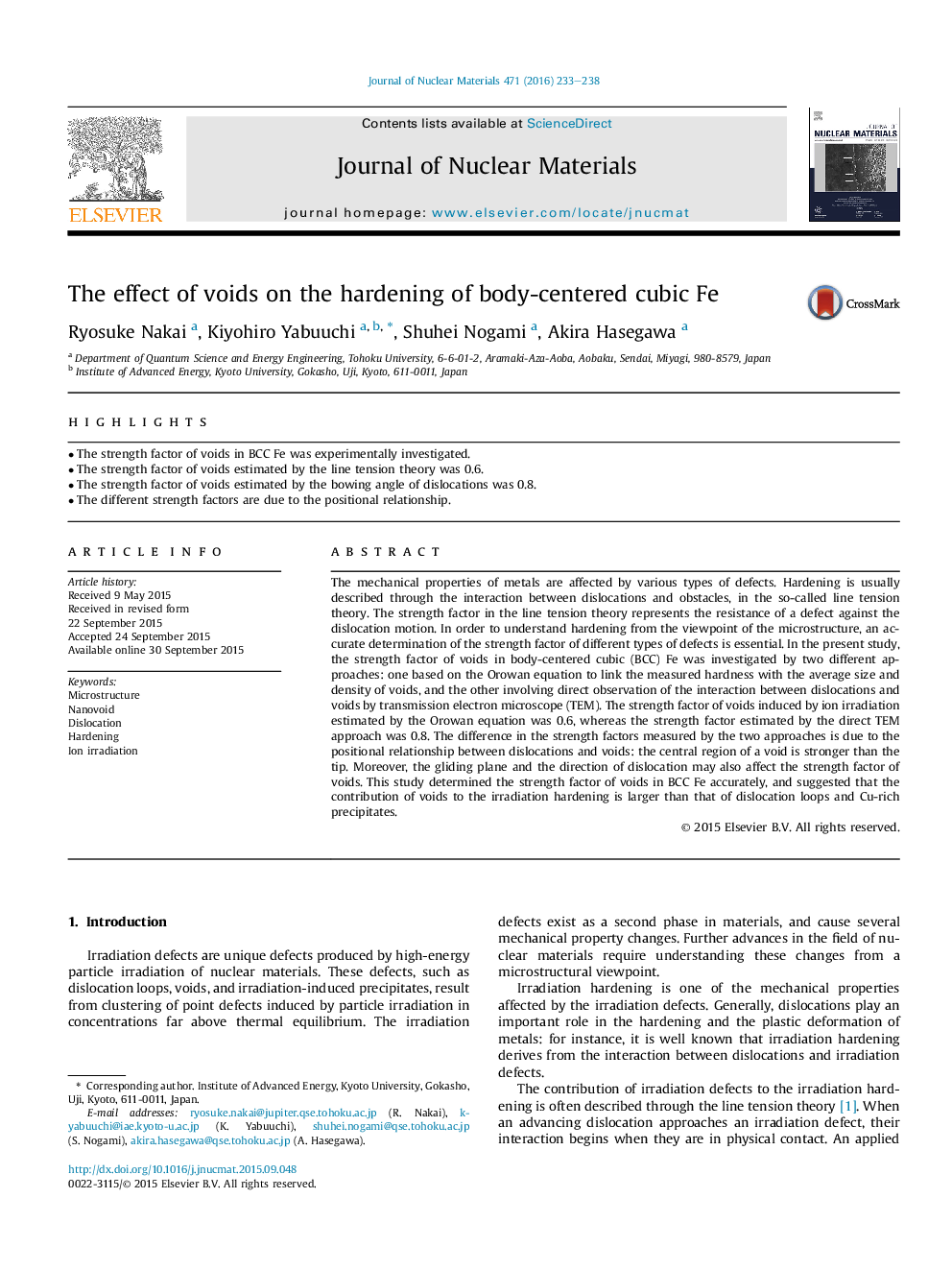| Article ID | Journal | Published Year | Pages | File Type |
|---|---|---|---|---|
| 1564755 | Journal of Nuclear Materials | 2016 | 6 Pages |
Abstract
The mechanical properties of metals are affected by various types of defects. Hardening is usually described through the interaction between dislocations and obstacles, in the so-called line tension theory. The strength factor in the line tension theory represents the resistance of a defect against the dislocation motion. In order to understand hardening from the viewpoint of the microstructure, an accurate determination of the strength factor of different types of defects is essential. In the present study, the strength factor of voids in body-centered cubic (BCC) Fe was investigated by two different approaches: one based on the Orowan equation to link the measured hardness with the average size and density of voids, and the other involving direct observation of the interaction between dislocations and voids by transmission electron microscope (TEM). The strength factor of voids induced by ion irradiation estimated by the Orowan equation was 0.6, whereas the strength factor estimated by the direct TEM approach was 0.8. The difference in the strength factors measured by the two approaches is due to the positional relationship between dislocations and voids: the central region of a void is stronger than the tip. Moreover, the gliding plane and the direction of dislocation may also affect the strength factor of voids. This study determined the strength factor of voids in BCC Fe accurately, and suggested that the contribution of voids to the irradiation hardening is larger than that of dislocation loops and Cu-rich precipitates.
Related Topics
Physical Sciences and Engineering
Energy
Nuclear Energy and Engineering
Authors
Ryosuke Nakai, Kiyohiro Yabuuchi, Shuhei Nogami, Akira Hasegawa,
